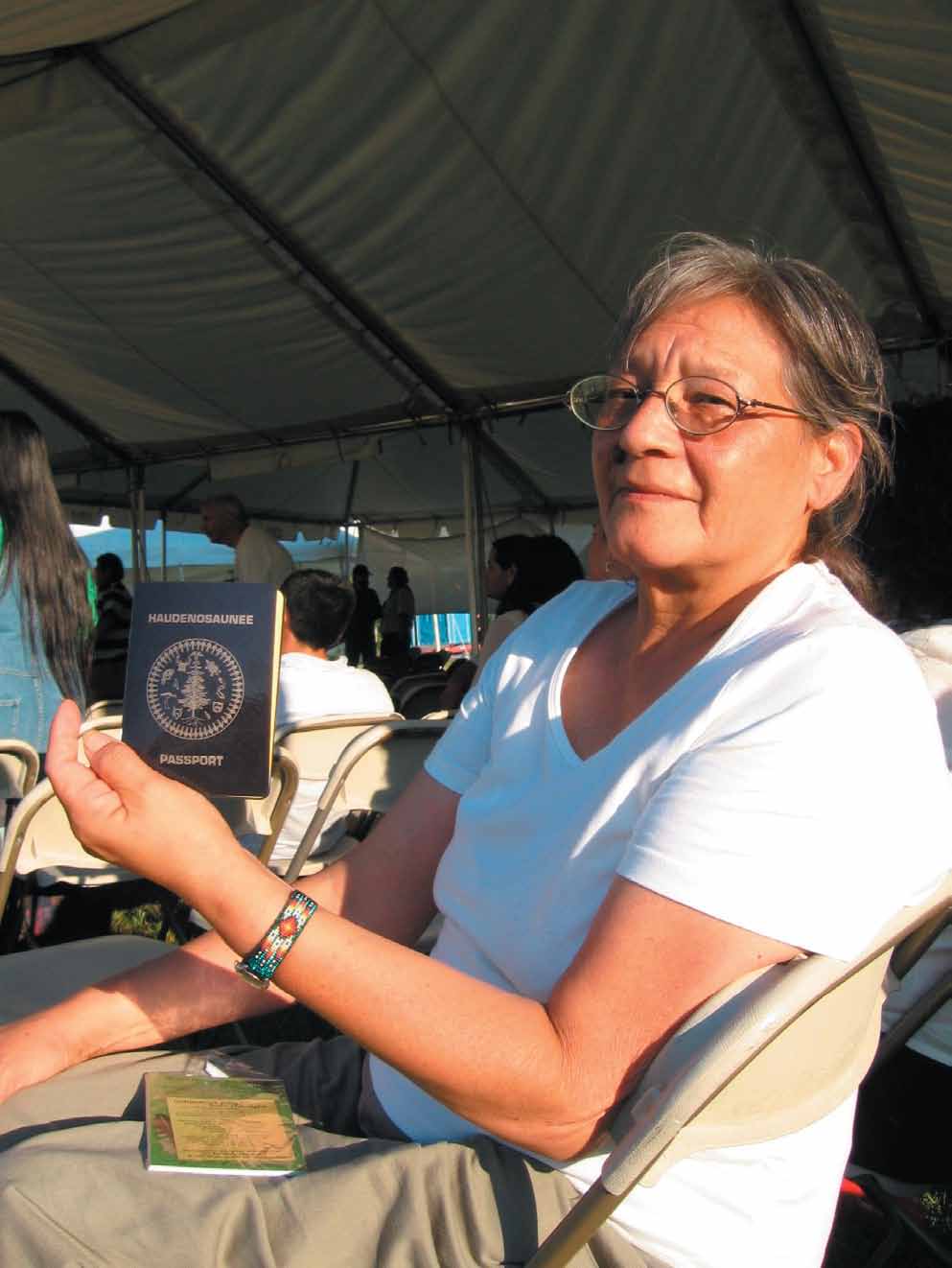
Convening of Indigenous Peoples to Heal Mother Earth
by Jeanne Shenandoah
 |
| Jeanne Shenandoah shows her Haudenosaunee passport to fellow indigenous leaders at the Convening of Indigenous Peoples for the Healing of Mother Earth. |
This past Spring, delegations of native peoples from across North America gathered in the traditional homeland of the Lacandones in Palenque, Mexico to discuss the health of Mother Earth and solutions to the environmental health issues affecting their respective communities. The meeting brought together representatives of the peoples arbitrarily split by the geopolitical borders of the United States, Canada and Mexico. We came from areas that we have to defend — to prevent the pollution and desecration of Mother Earth, and advocate for cleanup and future protection in places already damaged.
Environmental issues are Indigenous issues
The vast majority of Superfund sites in the US impact native lands, communities and sacred sites. The guidelines for “cleaning up” these sites do not sufficiently address the cultural differences between native lifeways and the typical US lifestyle. The use of and interaction with the natural world through our food and ceremonies is a significant part of our culture. Pollutants that bioaccumulate in these plants and animals cause significant health problems, often leaving us with an unthinkable choice between our own personal health and the health of our cultures. To have government regulators make decisions that leave these toxins in place, or to allow their continued pollution, is cultural ignorance at best and genocide at worst.
At the Convening, we sat in a circle and took turns sharing our stories. Each day’s speakers shared a theme of one of the Four Sacred Elements of Life: Earth, Water, Air, and Fire. Fire ignites and unites the spirit of humanity. Water is the life blood of all living things. Air is the sacred breath of life. Earth is the Mother that nurtures us all.
Many people spoke about how water is being diverted, polluted and the resulting birth defects, miscarriages and illness. Others spoke about mining, from the uranium mines on sacred sites in Arizona to the tar sands mining in Alberta that threatens to destroy a boreal forest the size of Florida to feed American consumers’ need for oil. These operations have already poisoned the water, fish and moose that the Dene, Cree First Nations, and Métis depend upon. Similarly, global climate change has already severely impacted Arctic native peoples as their land melts around them and migratory patterns are disrupted.
These stories paint a picture of an ongoing war against Indigenous Peoples and our lifeways. It did not end with the Clinton-Sullivan campaign or the Trail of Tears, and consumers are unwitting accomplices. The first step to changing this is to listen to and respect what Indigenous Peoples are saying on behalf of our communities and the environment. The second is to take what you’ve learned and do something about it.
All things are connected
These issues of global significance echo locally, from the pollution of Onondaga Lake, to current threats to the environment, such as natural gas hydrofracking (high-pressure injection of water, sand and chemicals to fracture rock), which if allowed will pollute groundwater all over with an undisclosed mixture of highly mobile carcinogenic and other chemicals.
Our Land Rights Action reasserts our responsibilities as stewards of this land – local, state and federal governments need to listen to our knowledge for environmental decisions. Article 32 of the Declaration of the Rights of Indigenous Peoples, adopted by the UN in 2007, confirms that nation-states “shall consult and cooperate in good faith with the Indigenous peoples concerned… in order to obtain their free and informed consent prior to the approval of any project affecting their lands or territories and other resources....”
At the Convening, we not only came together to listen to each other, greet old friends and honor and care for Mother Earth through our ceremonies; we developed a message for the world. The Message of the Living Spirit of the Convening of Indigenous Peoples for the Healing of Mother Earth is a call to action for Indigenous Peoples and the global community. It calls for adoption of the Declaration on the Rights of Indigenous Peoples, respect for the four sacred elements and Indigenous Peoples’ roles and responsibilities in their protection. The full text can be found at www.chiefs-of-ontario.org/environment/docs/conveningmessage031808.pdf. The Declaration on the Rights of Indigenous Peoples can be found at www.iwgia.org/sw248.asp.
Climate change has proved once and for all that Western culture’s activities are unsustainable. It is time to change that paradigm. Our survival depends on it.